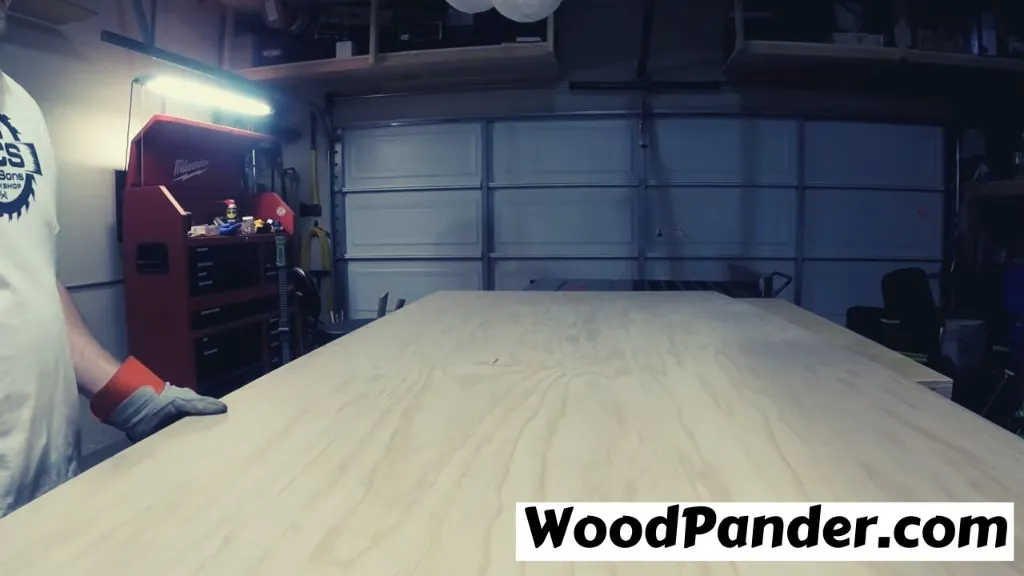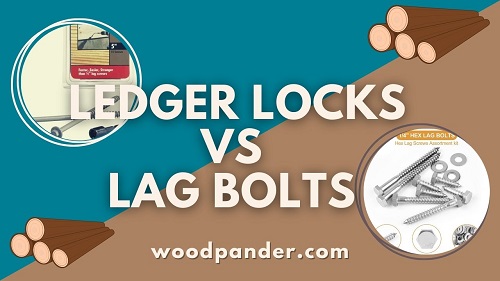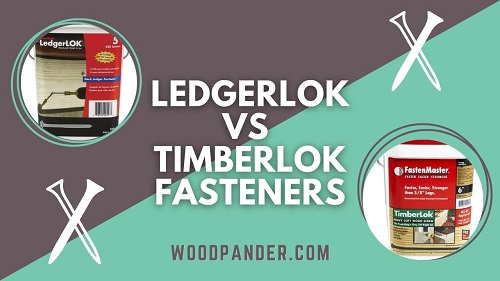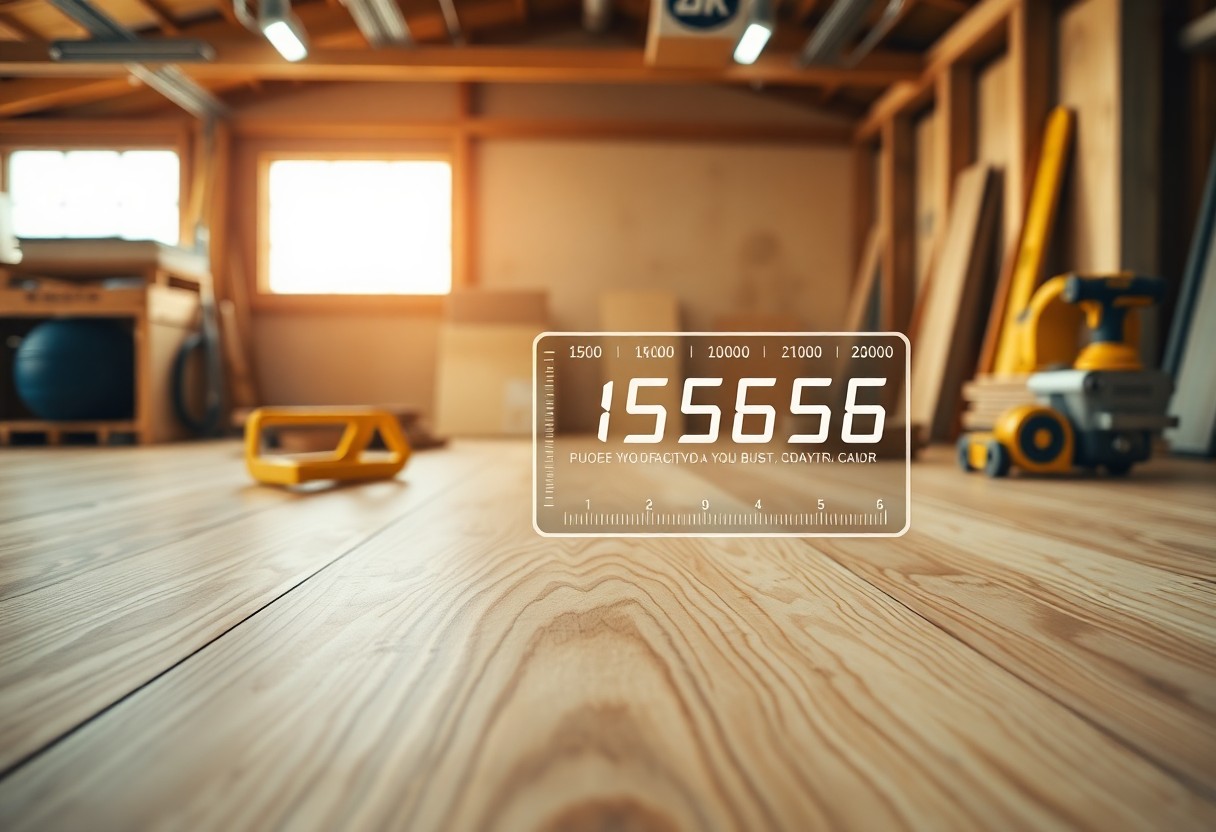French cleats can save a lot of time and space. It’s also super strong. But there are multiple variables that determine cleat’s carrying capacity. That’s why you’ve to know about them before making a final decision.
So, how much weight can a french cleat hold?
French cleats are famous for being space sufficient and extremely strong. A strong french cleat can hold up to 200-300 pounds. But it’s mostly about materials and fasteners. For example, plywood can bear more weight than metal. Also, the mechanical fasteners can add up to 500 pounds without any issue.
Anyhow, that was a quick glance at the entire discussion. There are a lot of calculations and factors to consider and take into account.
| Material of French Cleat | Thickness of French Cleat | Weight Capacity |
|---|---|---|
| Plywood | 3/4 inch (19 mm) | Up to 200 lbs |
| MDF (Medium-Density Fiberboard) | 3/4 inch (19 mm) | Up to 150 lbs |
| Solid Wood (Hardwood) | 3/4 inch (19 mm) | Up to 250 lbs |
| Metal (Steel or Aluminum) | 1/8 inch (3 mm) | Up to 300 lbs |
| Plastic (High-Density Polyethylene) | 3/4 inch (19 mm) | Up to 100 lbs |
So, keep reading if you wish to know more about french cleats in detail.
- What Is A French Cleat?
- Why Is It Called a French Cleat
- What Is The Best Size of Wood to Make a French Cleat?
- How Does A French Cleat Function
- How Strong Is A French Cleat?
- Best Angle for French cleat
- Best Wood for French Cleat
- Best Material for French Cleats
- What Are The Things A French Cleat Can Hold?
- How To Increase The Weight Capacity Of A French Cleat?
- Wood Vs. Metal French Cleat
- What Are The Advantages Of A French Cleat Wall?
- Can You Use MDF For a French Cleat?
- Why Should You Use French Cleat?
- How to Install French Cleat Hanger
- How Much Weight Can MDF Hold?
- How Much Weight Can a Wall Hold?
- How Much Weight Can a Wood Table Hold?
- How Much Weight Can a Plywood Cabinet Hold?
- How Much Weight Can a Shelf Hold in Studs?
- What Makes A French Cleat Extremely Tough
- French Cleat Calculator
- MDF Weight Capacity Calculator
- Related Questions
- Take Away
What Is A French Cleat?
French cleats let you hang cabinets, and many other things on the wall. It’s a very renowned technique from the medieval era.
The origin of the name “French Cleat” is actually unknown. However, many people believe it comes from frenching. Frenching means cutting something into thin straps; like french fries!
But the most logical way to assume would be that it was invented by French people. The influence of the French was massive, so it makes perfect sense.
Why Is It Called a French Cleat
The term “French Cleat” originated from French craftsmen who popularized this wall mounting system.
The name “French Cleat” stuck because of its association with these craftsmen.
The design consists of two interlocking wooden strips, one attached to the wall and the other to the object being hung, providing stability and weight-bearing capacity.
What Is The Best Size of Wood to Make a French Cleat?
The best size of wood to make a French cleat depends on the weight and size of the object you plan to hang. Generally, a 2×4 or 2×6 piece of lumber is commonly used for making French cleats. These sizes provide enough strength and stability to hold a variety of items securely on the wall.
For smaller and lighter objects, such as picture frames or small shelves, a 2×4 piece of wood is usually sufficient. It offers enough surface area for attaching the cleat to the wall and the object, ensuring a secure hold.
If you’re planning to hang larger and heavier items, like cabinets or heavy-duty shelves, a 2×6 piece of wood may be a better choice. The wider surface area of the 2×6 provides increased stability and weight-bearing capacity, making it suitable for heavier loads.
Ultimately, the best size of wood for a French cleat depends on the specific requirements of your project.
Consider the weight and size of the object you want to hang, and choose a wood size that can adequately support it. Remember to use appropriate hardware and ensure proper installation for optimal performance.
How Does A French Cleat Function

How does a french cleat function? Questions like this are very common. Just like how much wood is equal to 1 ton of coal? To understand them you’ll need to know the science behind them.
A French cleat has a 45-degree cut. There are two cleats; tool cleat and wall cleat. The latter is screwed to the wall stud. Then the tool cleat sits on the wall cleat with tools.
The point where the object sits is called a pivot point. The closer the point is, the stronger the cleat will be.
If the tool cleat is sitting vertically, it won’t cause any damage. Because the weight itself is being backed up by the wall.
Just imagine a triangle where one side is connected. The hypotenuse below backs up the weight.
How Strong Is A French Cleat?
A French cleat’s strength depends on several factors.
Factor 1: French Cleat Material
The first factor is the material used to make the cleat. Whether it’s metal or wood, the material’s strength will determine how much weight the cleat can hold.
Factor 2: French Cleat Dimension
The second factor is the dimension of the cleat. A larger and thicker cleat will generally have a higher weight capacity.
Factor 3: Fastener Type and Placement
The third factor is the type and placement of fasteners used to secure the cleat to the wall. Properly chosen and positioned fasteners contribute to the overall strength of the cleat.
Factor 4: Wall Surface and Stud Strength
The fourth factor is the strength of the wall surface and studs. A sturdy wall surface and strong studs provide additional support.
Factor 5: Loading Distribution
Lastly, the way the weight is distributed along the cleat also affects its strength. By considering these factors, you can determine how strong a French cleat is and its weight capacity.
Best Angle for French cleat
The most common angle used for French cleats is 45 degrees. This angle provides a balance of strength and ease of installation, making it suitable for a wide variety of applications.
Rockler 45 Degree French Cleat Hardware Kit is a great option for those who are looking for a complete kit that includes all of the hardware they need to install French cleats.
Kreg Precision Trac French Cleat System is a good choice for those who are looking for a system that is easy to install and use.
Lee Valley Hardware 30-Degree French Cleats are a good option for those who are looking for a shallower angle French cleat.
Freud 45 Degree French Cleat Router Bit is a good option for those who are looking for a router bit that is specifically designed for cutting French cleats.
Rockler 45 Degree French Cleat Blanks are a good option for those who are looking for French cleats that they can cut to their own custom size.
Best Wood for French Cleat
Maple: Maple is a strong, hard wood that is relatively easy to work with. It is a good choice for French cleats that will be used to hold heavy objects.
Oak: Oak is another strong, hard wood that is a good choice for French cleats. It is a little more difficult to work with than maple, but it is also more durable and resistant to rot.
Poplar: Poplar is a soft, lightweight wood that is easy to work with. It is a good choice for French cleats that will not be used to hold heavy objects.
Plywood: Plywood is a good choice for French cleats that need to be strong and durable. It is also less likely to warp or twist than solid wood.
Poplar Hardwood Lumber is a good option for those who are looking for high-quality poplar lumber.
Maple Hardwood Lumber is a good option for those who are looking for high-quality maple lumber.
Red Oak Hardwood Lumber is a good option for those who are looking for high-quality oak lumber
Best Material for French Cleats
Plywood: Plywood is a strong, durable, and versatile material that is often used for French cleats. It is made up of several thin layers of wood glued together, which makes it less likely to warp or twist than solid wood. Plywood is also relatively inexpensive and easy to find.
Hardwood: Hardwoods such as maple, oak, and poplar are also good choices for French cleats. They are strong and durable, and they can be stained or painted to match your décor.
MDF: Medium-density fiberboard (MDF) is a type of engineered wood that is often used for furniture and cabinets. It is smooth, dense, and easy to paint. MDF is not as strong as plywood or hardwood, but it is a good choice for French cleats that will not be used to hold heavy objects.
Metal: Metal French cleats are a good choice for applications where strength and durability are critical. They are not as common as wood or MDF French cleats, but they can be a good option for heavy-duty applications.
What Are The Things A French Cleat Can Hold?
A French cleat can hold a variety of items securely on the wall.
Bookshelves can be easily mounted using a French cleat, providing a sturdy and stylish storage solution.
Kitchen cabinets can also be hung using this method, ensuring they stay in place even when filled with heavy dishes.
Tools, such as hammers and wrenches, can be organized and displayed on a French cleat wall for easy access.
Bikes can be stored vertically using a specially designed French cleat bike rack.
Additionally, artwork and frames can be securely hung on a French cleat, allowing for easy rearrangement and display.
How To Increase The Weight Capacity Of A French Cleat?
To increase the weight capacity of a French cleat, there are several strategies you can employ.
First, consider using thicker and wider cleats, as they provide more surface area for weight distribution.
Secondly, opt for stronger fasteners, such as heavy-duty screws or bolts, to ensure a secure hold. Anchoring the cleats into solid studs will also enhance stability and weight-bearing capacity.
Lastly, it’s important to distribute the weight evenly across the cleat by using multiple cleats or adding additional support brackets.
By implementing these measures, you can significantly increase the weight capacity of your French cleat.
Wood Vs. Metal French Cleat
When deciding between wood and metal for your French cleat, it’s important to weigh the advantages and disadvantages of each material.
Wood cleats are affordable and customizable, but metal cleats provide superior strength and durability.
By understanding the pros and cons of both options, you can make an informed decision that suits your needs.
| Aspect | Wood French Cleat | Metal French Cleat |
|---|---|---|
| Strength | Moderate strength | Higher strength |
| Durability | Susceptible to warping | More resistant to warping |
| Weight Capacity | Lower weight capacity | Higher weight capacity |
| Installation Ease | Easy to cut and install | May require special tools for cutting |
| Cost | Generally cheaper | Usually more expensive |
| Appearance | Natural look | Sleek and industrial look |
What Are The Advantages Of A French Cleat Wall?
One of the advantages of a French cleat wall is its versatility. It allows for easy rearrangement and customization of storage solutions.
Additionally, a French cleat wall provides excellent support and stability, making it ideal for hanging heavy items.
With its simple installation process and cost-effectiveness, a French cleat wall is a practical choice for organizing and maximizing space.
Can You Use MDF For a French Cleat?
MDF, or medium-density fiberboard, is not the ideal material for a French cleat. While it can hold some weight, it is not as strong or durable as wood.
MDF is prone to sagging and may not provide the necessary support for heavier items.
It is best to use a solid wood material, such as plywood or hardwood, for a French cleat to ensure maximum weight capacity and stability.
Why Should You Use French Cleat?
There are a lot of benefits you can have by installing french cleats. Let’s have a look at them below-
Space Management
Space management is a common issue if you’re living in a small house. The small and medium rooms can benefit a lot from these cleats.
See, normally, you would need a table to keep things. But the table can only do so much. Like, 2 shelves at max.
On top of that, the upper area of the wall always remains unused. That’s when a french cleat becomes a necessity. By using them, you can make small cabinets that can be hung around.
This gives you a lot of space where you can install or keep something else.
Durability
Another plus point of having a french cleat is the durability. French cleats are super durable due to their building structure.
It sends a lot of the weight back to the wall. Because of that, a french cleat can last for many years.
Usually, the nails are prone to come off or get weakened before the cleat.
How to Install French Cleat Hanger
To install a French cleat hanger, follow these step-by-step instructions. First, gather the necessary materials, including a level, screws, and a drill.
Next, measure and mark the desired height for your cleat on the wall. Then, attach the cleat to the wall using the level to ensure it is straight.
Make sure to secure it firmly with screws. Finally, attach the corresponding cleat to the back of the object you want to hang, making sure it aligns with the cleat on the wall. Carefully hang the object onto the wall-mounted cleat, ensuring a secure fit.
How Much Weight Can MDF Hold?
MDF, or medium-density fiberboard, is a popular material for various woodworking projects, including French cleats.
When it comes to weight capacity, MDF can hold a significant amount of weight. However, the exact weight it can support depends on several factors, such as the thickness of the MDF, the size and number of screws used, and the overall design and installation of the French cleat.
It is generally recommended to use thicker MDF and ensure proper installation for optimal weight capacity.
Additionally, reinforcing the MDF with additional support or using metal brackets can further increase its weight-holding capabilities.
How Much Weight Can a Wall Hold?
How much weight can a wall hold? This is a common question when it comes to installing items like shelves, cabinets, or even a French cleat on a wall. The weight capacity of a wall depends on several factors, including the type of wall, the material it is made of, and the method of installation.
For most standard residential walls, such as drywall or plaster, the weight capacity can range from 15 to 50 pounds per stud.
This means that if you are using a French cleat to hang something on the wall, you need to ensure that the weight is evenly distributed across multiple studs to maximize the weight capacity.
However, it’s important to note that the weight capacity can vary depending on the condition of the wall and the quality of the installation. If the wall is damaged or weakened, it may not be able to support as much weight. Additionally, if the French cleat or the screws used for installation are not properly secured, it can compromise the weight capacity of the wall.
To ensure that you are safely hanging items on a wall, it’s recommended to consult a professional or use a stud finder to locate the studs for optimal weight distribution. Additionally, using anchors or toggle bolts can provide extra support for heavier items.
How Much Weight Can a Wood Table Hold?
A wood table is a common piece of furniture found in many homes and offices. It serves as a functional surface for various activities, such as dining, working, or displaying items. When it comes to determining how much weight a wood table can hold, several factors come into play.
The weight capacity of a wood table depends on the type of wood used and its construction. Hardwoods like oak, maple, or mahogany are generally stronger and can support more weight compared to softwoods like pine or cedar. Additionally, the thickness and quality of the wood also play a role in determining its weight capacity.
The design and construction of the table are equally important. Tables with sturdy legs and a solid frame are more likely to have a higher weight capacity. Reinforcements such as crossbars or braces can also increase the table’s strength and stability.
It’s important to note that evenly distributing the weight across the table is crucial to prevent any sagging or damage. Placing heavy objects directly in the center of the table can cause it to bow or even break. Using coasters or protective pads under heavy items can help distribute the weight more evenly.
To ensure the longevity and durability of your wood table, it’s recommended to follow the manufacturer’s guidelines regarding weight limits and proper usage. If you’re unsure about the weight capacity of your specific table, consulting with a professional or the manufacturer can provide you with more accurate information.
How Much Weight Can a Plywood Cabinet Hold?
The weight capacity of a plywood cabinet depends on various factors.
The thickness and quality of the plywood used, along with the construction techniques, are crucial. Cabinets made with thicker plywood and sturdy joinery can hold more weight.
Additionally, the type of hardware used and the distribution of weight within the cabinet also affect its weight capacity.
By considering these factors, you can ensure that your plywood cabinet can safely support the intended load.
How Much Weight Can a Shelf Hold in Studs?
A shelf mounted on studs can hold a significant amount of weight, but it depends on the strength of the studs and the type of shelf brackets used.
Typically, a well-secured shelf can hold up to 50 pounds per linear foot. However, it’s important to distribute the weight evenly and avoid overloading the shelf.
Using sturdy brackets and ensuring proper installation will maximize the weight capacity.
Additionally, reinforcing the studs or using additional support brackets can increase the shelf’s weight capacity.
What Makes A French Cleat Extremely Tough
There are multiple factors that make french cleats stand out among others. The weight carrying capacity of a french cleat depends on these factors. They are material types, glues, and mechanical fasteners.
So, to know how much weight can your french cleat carry, you should know these factors-
Materials
The material being used as french cleat matters a lot. It has to be tough and durable. Just like how finishing matters a lot for wooden coasters. Because if it fails, the entire cabinet will fall down.
There are mainly 3 types of material used for metal french cleat for cabinets. We’ve highlighted the weight-holding capacity of both-
| Feature | Metal | Plywood | MDF |
| Weight Carrying Capacity | Moderate | Very High | High |
Now, let’s learn the details-
Metals are the least strong that are used as cleats. They are super good for keeping light things. They are also super cheap too.
On the contrary, plywoods are super dense and tough. They are also very durable and can stay intact for a long time. They hardly get sheared.
People also use MDF as french cleats. But they are comparatively weaker than plywood. They’re also cheaper than plywood.
Speaking of materials, here are some of our best recommendations for plywood french cleat-
You can now choose any that you prefer and get started!
Glue
Glues are very important for making sturdy holders. Without strong glue, you won’t be able to keep heavy things.
Epoxy is a great adhesive to use. They are quite strong and usually lasts for 2-3 years without any nails. Silicone adhesives and wood glues are also great alternatives.
You’ll also need some nails to carry even more weight. Using a nailer will help a lot.
Mechanical Fasteners
A mechanical fastener is used to join multiple objects. Remember to use construction-grade screws as fasteners. This way your french cleat will be able to carry more weight.
There are multiple sizes of fasteners. Among them, we recommend using size 6 screws and size 8 screws.
A size 8 fastener is really good for connecting the plywood to the wall stud. When multiple of them are connected, they can carry up to 500 pounds.
As for the connecting holders, size 6 screws are enough. They can carry around 250 pounds of pull weight. Together, these screws make the cleats extremely strong.
Speaking of fasteners, here are top picks-
| Fastener 1 | |
| Fastener 2 |
You can now pick whichever you like and get started!
Lastly, always remember to make a proper plan prior to the installation. Then go ahead and install french cleats for hanging your wall cabinets.
French Cleat Calculator
A French cleat calculator is a tool used to determine the dimensions and angles needed to create a French cleat system. It helps ensure proper weight distribution and stability when hanging items on a wall.
The calculator typically takes into account the thickness of the cleat, the weight of the object being hung, and the desired angle for optimal support.
French Cleat Calculator
MDF Weight Capacity Calculator
MDF Weight Capacity Calculator: Calculating the weight capacity of an MDF French cleat is crucial for ensuring the safety and stability of your wall-mounted items.
Factors such as the thickness and dimensions of the MDF, as well as the spacing and number of screws used, can affect its weight capacity.
Use our MDF weight capacity calculator to determine the maximum weight your MDF French cleat can hold.
Related Questions
How thick does a French cleat need to be?
The French cleats should always be ¾” thicker. Because this amount of thickness can withstand a lot of weight. So, overall it will provide more than 200 pounds of pull weight.
How do you cut a French cleat?
To cut a perfect french cleat, you’ll need a saw. Place the saw at a 45-degree angle. Then simply run the plywood through it.
Can I use 2x4 for French cleat?
2x4 plywood is super good to use as french cleats. The weights are always evenly distributed. So, all you have to do is to cut in the middle and you’re done!
Can a French cleat support a TV?
Yes, a French cleat can support a TV if it is properly installed.
How strong is French cleat shelf?
The strength of a French cleat shelf depends on the thickness and material of the cleat, but it can be very strong and support heavy objects.
How secure is a French cleat?
A French cleat is very secure if installed correctly and with appropriate hardware.
How strong is a French cleat on a wall?
A French cleat is very strong on a wall if properly installed and used with appropriate mounting hardware.
Take Away
That was all we could gather on how much weight can a french cleat hold. We hope that we have provided enough to satisfy your curiosity.
Last but not least, have a nice day!

![1/2 vs 3/4 Plywood for Cabinets [Unlimited Guide] 12 vs 34 Plywood for Cabinets](https://woodpander.com/wp-content/uploads/2023/11/12-vs-34-Plywood-for-Cabinets.jpg)






